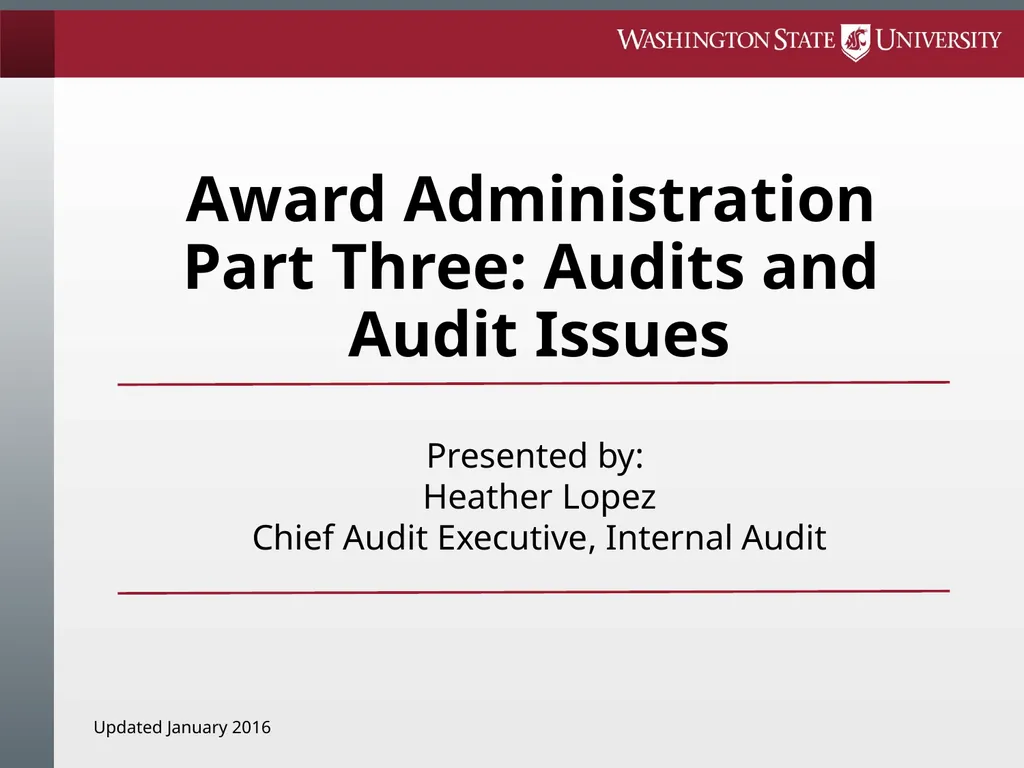
Author : faustina-dinatale | Published Date : 2025-06-23
Description: Award Administration Part Three: Audits and Audit Issues Updated January 2016 Presented by: Heather Lopez Chief Audit Executive, Internal Audit Recording date of this workshop is March 14, 2014 Some of the rules and procedures discussed inDownload Presentation The PPT/PDF document "" is the property of its rightful owner. Permission is granted to download and print the materials on this website for personal, non-commercial use only, and to display it on your personal computer provided you do not modify the materials and that you retain all copyright notices contained in the materials. By downloading content from our website, you accept the terms of this agreement.
Here is the link to download the presentation.
"Award Administration Part Three: Audits and Audit"The content belongs to its owner. You may download and print it for personal use, without modification, and keep all copyright notices. By downloading, you agree to these terms.













